Lingjie Kong
EFCNet: Every Feature Counts for Small Medical Object Segmentation
Jun 26, 2024



Abstract:This paper explores the segmentation of very small medical objects with significant clinical value. While Convolutional Neural Networks (CNNs), particularly UNet-like models, and recent Transformers have shown substantial progress in image segmentation, our empirical findings reveal their poor performance in segmenting the small medical objects and lesions concerned in this paper. This limitation may be attributed to information loss during their encoding and decoding process. In response to this challenge, we propose a novel model named EFCNet for small object segmentation in medical images. Our model incorporates two modules: the Cross-Stage Axial Attention Module (CSAA) and the Multi-Precision Supervision Module (MPS). These modules address information loss during encoding and decoding procedures, respectively. Specifically, CSAA integrates features from all stages of the encoder to adaptively learn suitable information needed in different decoding stages, thereby reducing information loss in the encoder. On the other hand, MPS introduces a novel multi-precision supervision mechanism to the decoder. This mechanism prioritizes attention to low-resolution features in the initial stages of the decoder, mitigating information loss caused by subsequent convolution and sampling processes and enhancing the model's global perception. We evaluate our model on two benchmark medical image datasets. The results demonstrate that EFCNet significantly outperforms previous segmentation methods designed for both medical and normal images.
AnyMaker: Zero-shot General Object Customization via Decoupled Dual-Level ID Injection
Jun 17, 2024Abstract:Text-to-image based object customization, aiming to generate images with the same identity (ID) as objects of interest in accordance with text prompts and reference images, has made significant progress. However, recent customizing research is dominated by specialized tasks, such as human customization or virtual try-on, leaving a gap in general object customization. To this end, we introduce AnyMaker, an innovative zero-shot object customization framework capable of generating general objects with high ID fidelity and flexible text editability. The efficacy of AnyMaker stems from its novel general ID extraction, dual-level ID injection, and ID-aware decoupling. Specifically, the general ID extraction module extracts sufficient ID information with an ensemble of self-supervised models to tackle the diverse customization tasks for general objects. Then, to provide the diffusion UNet with the extracted ID as much while not damaging the text editability in the generation process, we design a global-local dual-level ID injection module, in which the global-level semantic ID is injected into text descriptions while the local-level ID details are injected directly into the model through newly added cross-attention modules. In addition, we propose an ID-aware decoupling module to disentangle ID-related information from non-ID elements in the extracted representations for high-fidelity generation of both identity and text descriptions. To validate our approach and boost the research of general object customization, we create the first large-scale general ID dataset, Multi-Category ID-Consistent (MC-IDC) dataset, with 315k text-image samples and 10k categories. Experiments show that AnyMaker presents remarkable performance in general object customization and outperforms specialized methods in corresponding tasks. Code and dataset will be released soon.
Cross-Domain Few-Shot Object Detection via Enhanced Open-Set Object Detector
Feb 05, 2024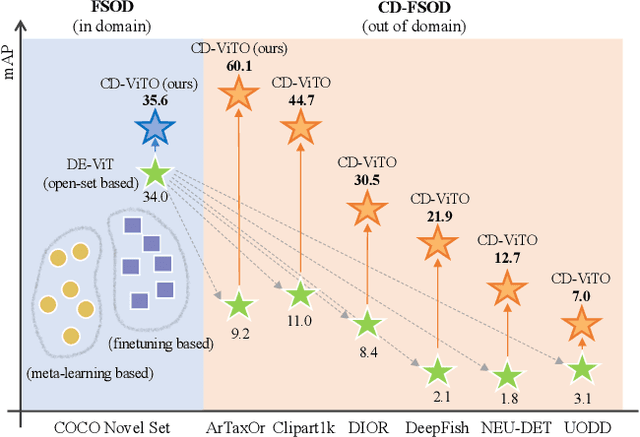

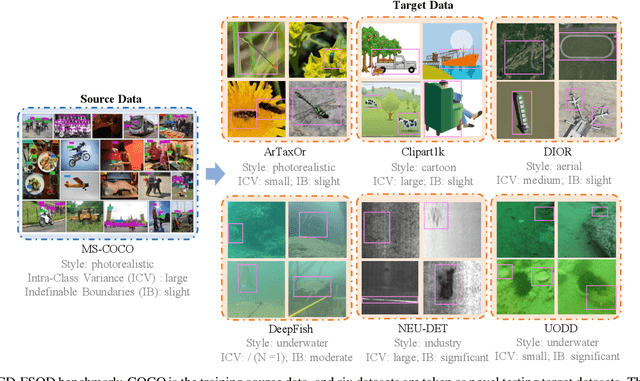

Abstract:This paper addresses the challenge of cross-domain few-shot object detection (CD-FSOD), aiming to develop an accurate object detector for novel domains with minimal labeled examples. While transformer-based open-set detectors e.g., DE-ViT~\cite{zhang2023detect} have excelled in both open-vocabulary object detection and traditional few-shot object detection, detecting categories beyond those seen during training, we thus naturally raise two key questions: 1) can such open-set detection methods easily generalize to CD-FSOD? 2) If no, how to enhance the results of open-set methods when faced with significant domain gaps? To address the first question, we introduce several metrics to quantify domain variances and establish a new CD-FSOD benchmark with diverse domain metric values. Some State-Of-The-Art (SOTA) open-set object detection methods are evaluated on this benchmark, with evident performance degradation observed across out-of-domain datasets. This indicates the failure of adopting open-set detectors directly for CD-FSOD. Sequentially, to overcome the performance degradation issue and also to answer the second proposed question, we endeavor to enhance the vanilla DE-ViT. With several novel components including finetuning, a learnable prototype module, and a lightweight attention module, we present an improved Cross-Domain Vision Transformer for CD-FSOD (CD-ViTO). Experiments show that our CD-ViTO achieves impressive results on both out-of-domain and in-domain target datasets, establishing new SOTAs for both CD-FSOD and FSOD. All the datasets, codes, and models will be released to the community.
Real-time SLAM Pipeline in Dynamics Environment
Mar 04, 2023



Abstract:Inspired by the recent success of application of dense data approach by using ORB-SLAM and RGB-D SLAM, we propose a better pipeline of real-time SLAM in dynamics environment. Different from previous SLAM which can only handle static scenes, we are presenting a solution which use RGB-D SLAM as well as YOLO real-time object detection to segment and remove dynamic scene and then construct static scene 3D. We gathered a dataset which allows us to jointly consider semantics, geometry, and physics and thus enables us to reconstruct the static scene while filtering out all dynamic objects.
Double A3C: Deep Reinforcement Learning on OpenAI Gym Games
Mar 04, 2023Abstract:Reinforcement Learning (RL) is an area of machine learning figuring out how agents take actions in an unknown environment to maximize its rewards. Unlike classical Markov Decision Process (MDP) in which agent has full knowledge of its state, rewards, and transitional probability, reinforcement learning utilizes exploration and exploitation for the model uncertainty. Under the condition that the model usually has a large state space, a neural network (NN) can be used to correlate its input state to its output actions to maximize the agent's rewards. However, building and training an efficient neural network is challenging. Inspired by Double Q-learning and Asynchronous Advantage Actor-Critic (A3C) algorithm, we will propose and implement an improved version of Double A3C algorithm which utilizing the strength of both algorithms to play OpenAI Gym Atari 2600 games to beat its benchmarks for our project.
Path Integral Based Convolution and Pooling for Heterogeneous Graph Neural Networks
Feb 26, 2023



Abstract:Graph neural networks (GNN) extends deep learning to graph-structure dataset. Similar to Convolutional Neural Networks (CNN) using on image prediction, convolutional and pooling layers are the foundation to success for GNN on graph prediction tasks. In the initial PAN paper, it uses a path integral based graph neural networks for graph prediction. Specifically, it uses a convolution operation that involves every path linking the message sender and receiver with learnable weights depending on the path length, which corresponds to the maximal entropy random walk. It further generalizes such convolution operation to a new transition matrix called maximal entropy transition (MET). Because the diagonal entries of the MET matrix is directly related to the subgraph centrality, it provide a trial mechanism for pooling based on centrality score. While the initial PAN paper only considers node features. We further extends its capability to handle complex heterogeneous graph including both node and edge features.
Generative Models for 3D Point Clouds
Feb 26, 2023



Abstract:Point clouds are rich geometric data structures, where their three dimensional structure offers an excellent domain for understanding the representation learning and generative modeling in 3D space. In this work, we aim to improve the performance of point cloud latent-space generative models by experimenting with transformer encoders, latent-space flow models, and autoregressive decoders. We analyze and compare both generation and reconstruction performance of these models on various object types.
From Audio to Symbolic Encoding
Feb 26, 2023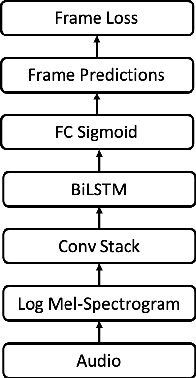
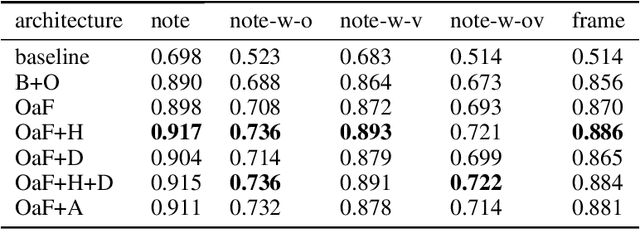

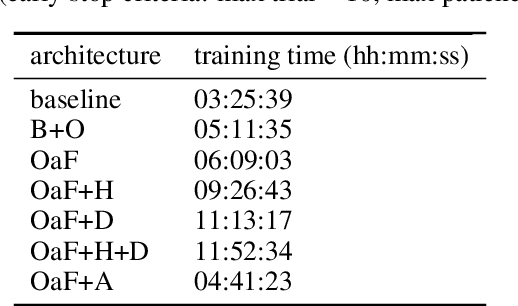
Abstract:Automatic music transcription (AMT) aims to convert raw audio to symbolic music representation. As a fundamental problem of music information retrieval (MIR), AMT is considered a difficult task even for trained human experts due to overlap of multiple harmonics in the acoustic signal. On the other hand, speech recognition, as one of the most popular tasks in natural language processing, aims to translate human spoken language to texts. Based on the similar nature of AMT and speech recognition (as they both deal with tasks of translating audio signal to symbolic encoding), this paper investigated whether a generic neural network architecture could possibly work on both tasks. In this paper, we introduced our new neural network architecture built on top of the current state-of-the-art Onsets and Frames, and compared the performances of its multiple variations on AMT task. We also tested our architecture with the task of speech recognition. For AMT, our models were able to produce better results compared to the model trained using the state-of-art architecture; however, although similar architecture was able to be trained on the speech recognition task, it did not generate very ideal result compared to other task-specific models.
DeepSim: A Reinforcement Learning Environment Build Toolkit for ROS and Gazebo
May 17, 2022
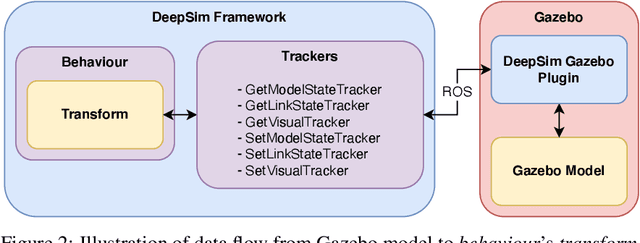
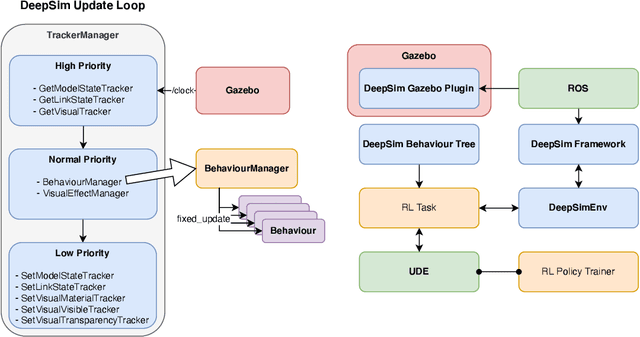

Abstract:We propose DeepSim, a reinforcement learning environment build toolkit for ROS and Gazebo. It allows machine learning or reinforcement learning researchers to access the robotics domain and create complex and challenging custom tasks in ROS and Gazebo simulation environments. This toolkit provides building blocks of advanced features such as collision detection, behaviour control, domain randomization, spawner, and many more. DeepSim is designed to reduce the boundary between robotics and machine learning communities by providing Python interface. In this paper, we discuss the components and design decisions of DeepSim Toolkit.
Unified Distributed Environment
May 14, 2022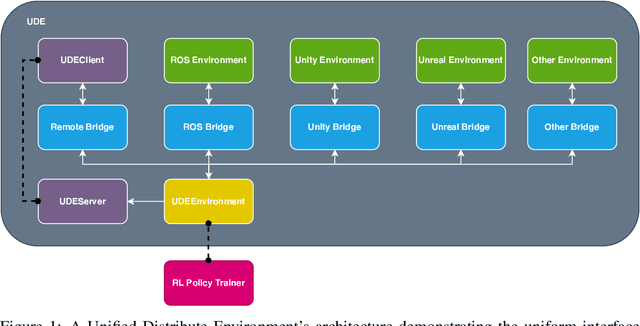
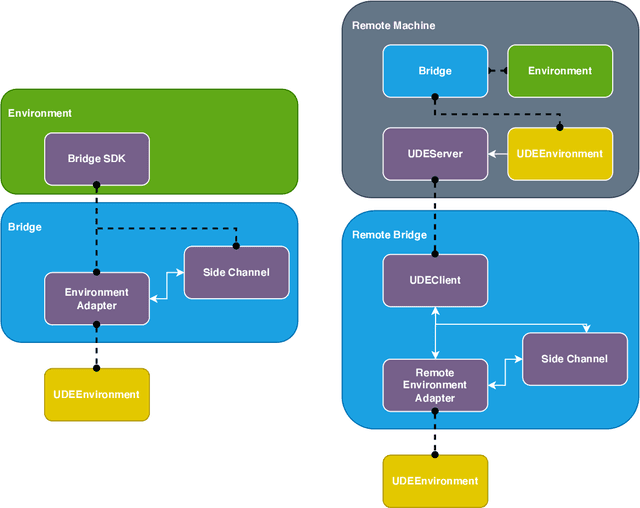
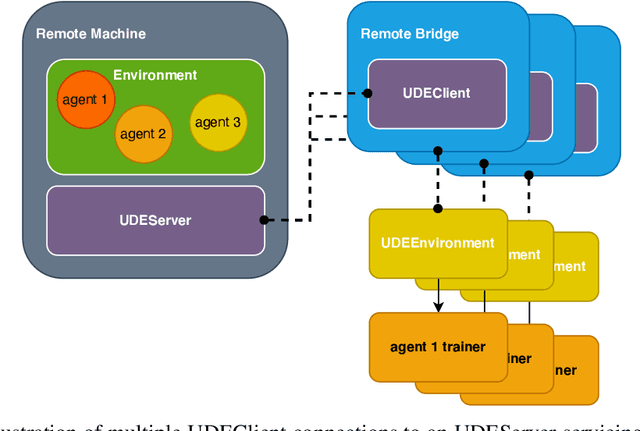

Abstract:We propose Unified Distributed Environment (UDE), an environment virtualization toolkit for reinforcement learning research. UDE is designed to integrate environments built on any simulation platform such as Gazebo, Unity, Unreal, and OpenAI Gym. Through environment virtualization, UDE enables offloading the environment for execution on a remote machine while still maintaining a unified interface. The UDE interface is designed to support multi-agent by default. With environment virtualization and its interface design, the agent policies can be trained in multiple machines for a multi-agent environment. Furthermore, UDE supports integration with existing major RL toolkits for researchers to leverage the benefits. This paper discusses the components of UDE and its design decisions.
 Add to Chrome
Add to Chrome Add to Firefox
Add to Firefox Add to Edge
Add to Edge